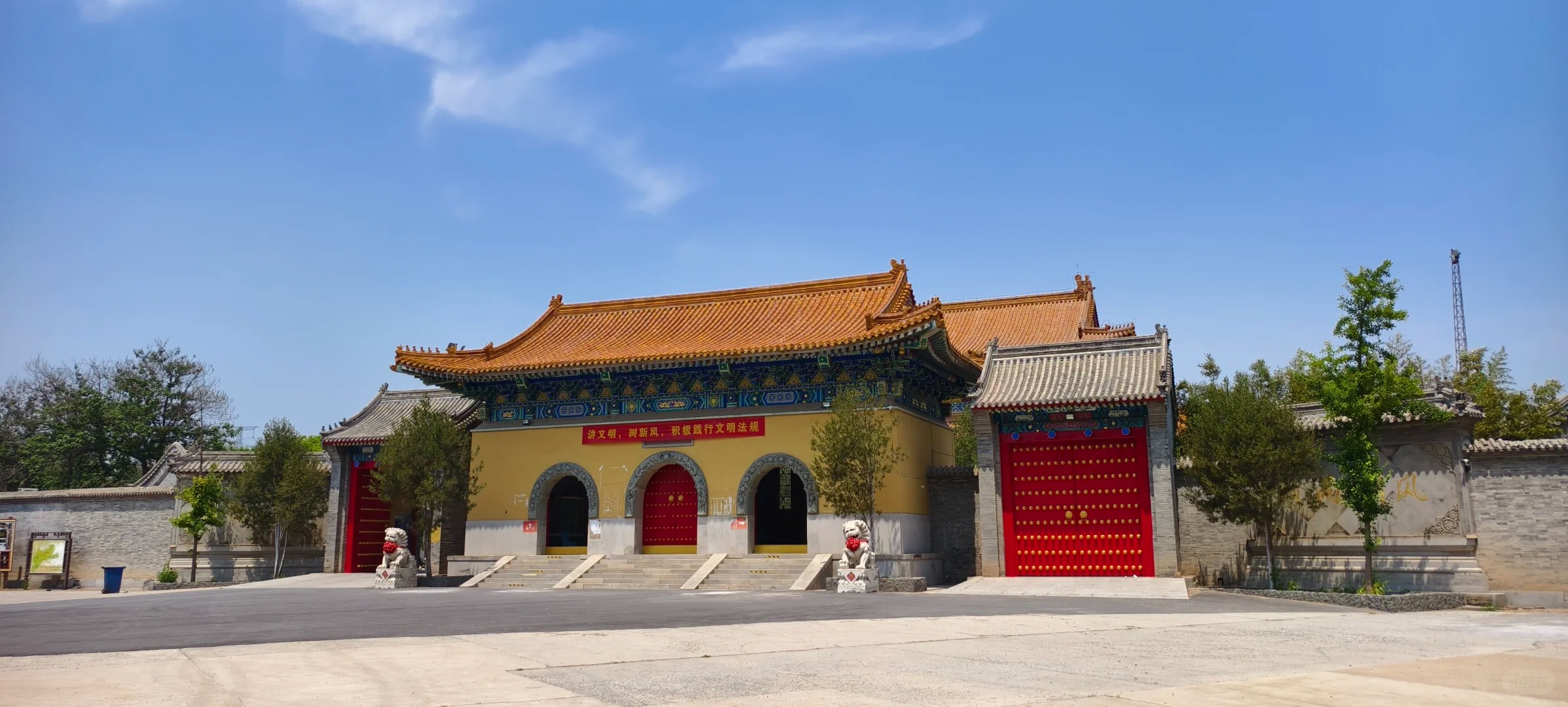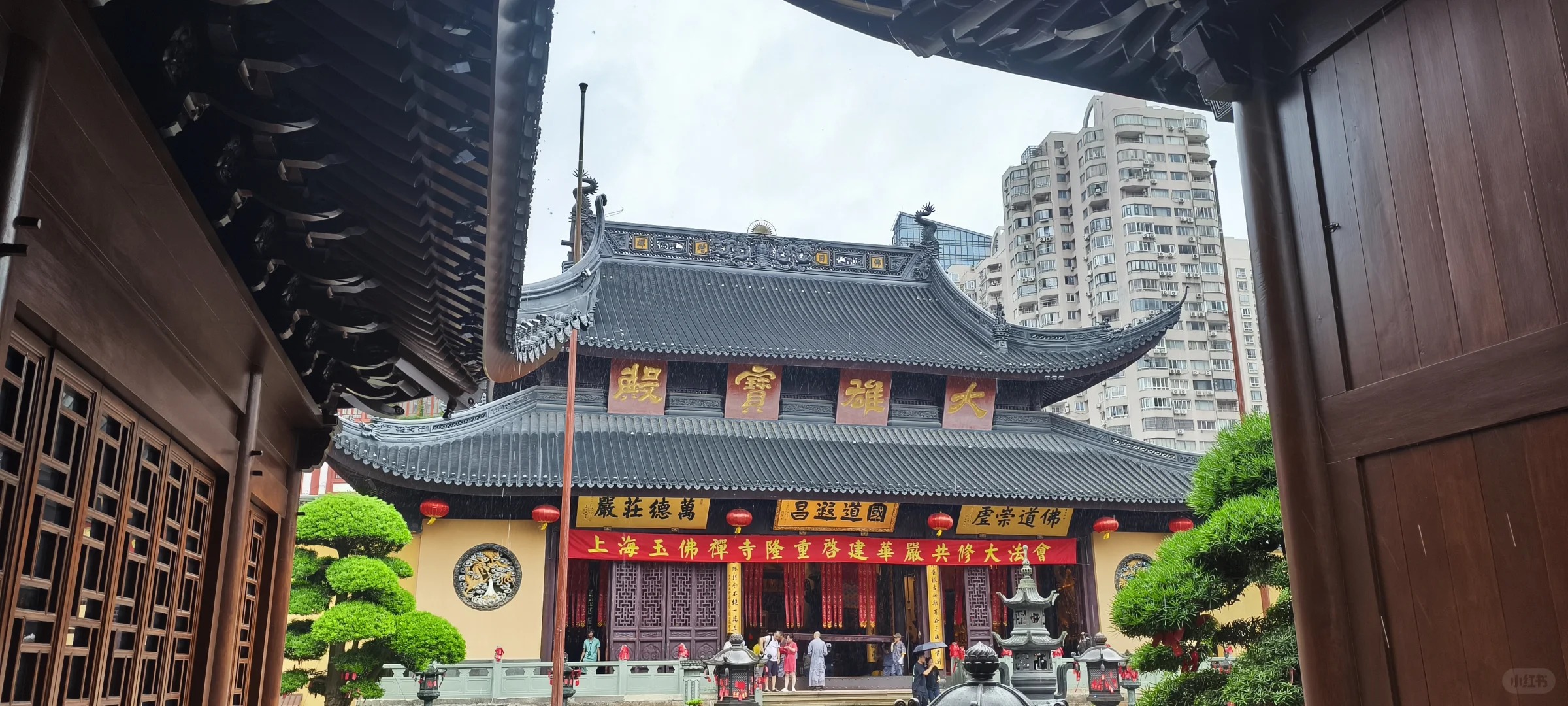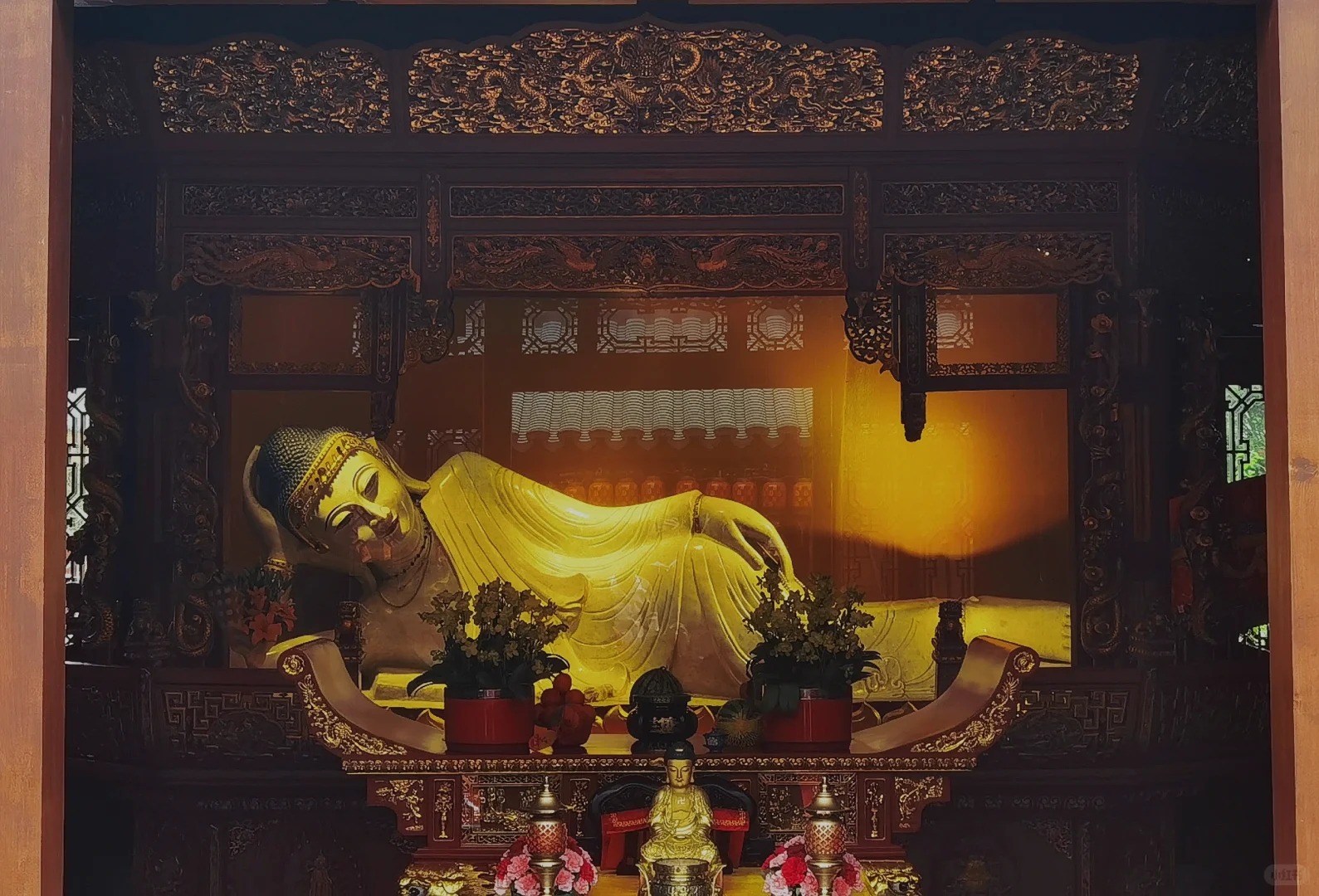Jade Buddha Temple

Historical Overview
The temple’s origins trace to 1882 when a monk named Huigen returned from Myanmar with five jade Buddha statues, two of which (the seated and reclining Buddhas) were enshrined here. Initially named “Burmese Jade Buddha Temple,” it was rebuilt in 1918–1928 after being destroyed during the Boxer Rebellion. The current complex reflects a fusion of Song Dynasty architectural styles and modern renovations. Over the decades, it has hosted high-ranking monks, international Buddhist conferences, and cultural exchanges, solidifying its role as a bridge between Eastern and Western spiritual traditions.
Architectural Layout
The temple follows a symmetrical layout typical of Chinese Buddhist temples, centered on a north-south axis:
Main Entrance (Shanmen Hall): A three-arched gateway adorned with dragon and phoenix carvings.
Four Heavenly Kings Hall (Tianwang Dian): Houses statues of the four guardian deities.
Mahavira Hall (Daxiong Baodian): The largest hall, housing the seated jade Buddha and 18 arhat statues.
Jade Buddha Chamber (Yufo Lou): A dedicated hall for the reclining jade Buddha.
Monastic Quarters: Includes meditation halls, scripture libraries, and living areas for monks.
Garden and Pagoda: A tranquil courtyard with bamboo groves and a nine-story pagoda.

Major Attractions
Seated Jade Buddha: A 1.9-meter-tall statue carved from a single jade block, adorned with sapphire eyes and gold-embroidered robes.
Reclining Jade Buddha: A 0.96-meter-long sculpture depicting Buddha’s entry into nirvana, with intricate jade veins resembling flowing water.
Three Golden Buddhas: Located in the Mahavira Hall, representing the past, present, and future Buddhas.
Bell Tower and Drum Tower: Used for daily Buddhist rituals; the bell weighs 10 tons.
Sutra Library: Houses over 7,000 Buddhist texts, including rare palm-leaf manuscripts.
Zen Garden: A minimalist rock garden for meditation, featuring a 300-year-old camphor tree.

Suggested Itineraries
- Classic Route (1.5–2 hours):
Shanmen Hall → Tianwang Dian → Mahavira Hall → Jade Buddha Chamber → Zen Garden → Exit
Highlights: Core Buddhist statues and serene courtyard.
- Spiritual Experience Route (3–4 hours):
Shanmen Hall → Morning Chanting Session (6:30–7:00 AM) → Mahavira Hall → Sutra Library → Vegetarian Lunch (¥30) → Meditation Class (2:00 PM) → Exit
Highlights: Participate in monastic rituals and mindfulness practices.
- Cultural Immersion Route (Full Day):
Shanmen Hall → Tianwang Dian → Mahavira Hall → Jade Buddha Chamber → Bell Tower → Sutra Library → Zen Garden → Vegetarian Dinner → Evening Prayer (6:00 PM)
Highlights: Full-day engagement with temple life, including meals and ceremonies.
Ticket Purchase
Online: Book via the official WeChat account “上海玉佛禅寺” (Shanghai Jade Buddha Temple) or Ctrip.
On-Site: Tickets available at the entrance; no advance booking required.
- Prices:
Adults: ¥20 (includes incense sticks).
Students/Seniors: ¥10.
Free: Children under 1.2m, disabled visitors.
Note: Vegetarian meals (lunch/dinner) cost ¥30–50 extra.
Transportation
By Subway: Line 7: Changshou Road Station (Exit 5), walk 10 minutes. Line 13: Jiangning Road Station (Exit 4), walk 15 minutes.
By Bus: Routes 19, 24, 36, 112, 136, or 206 to Jiangning Road Station.
By Taxi: Direct to “上海玉佛禅寺” (Shanghai Jade Buddha Temple).
Best Time & Tips
Peak Hours: Avoid weekends and Buddhist Festivals (e.g., Buddha’s Birthday in May). Visit early (8:00–9:30 AM) for quieter moments.
Dress Code: Cover shoulders and knees; remove hats indoors.
Etiquette: Follow monks’ lead during ceremonies; do not point feet at Buddha statues.
Photography: Allowed in courtyards but prohibited in halls.
Essentials: Bring cash for donations (optional) and a reusable water bottle.
Activities: Join free morning chanting or paid tea ceremonies (¥50/person).
Contact Us
What Our Clients Say?
Based on 10,000+ traveler reviews














